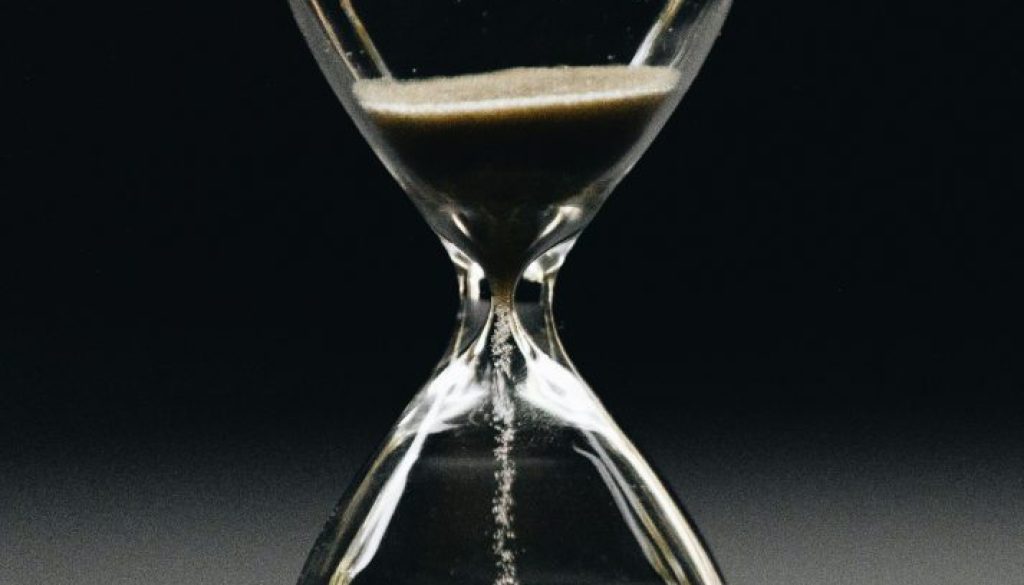Waiting For The Next Day
Shemini Atzeret is a notoriously little-understood holiday. The Torah gives us extensive reasons for the major holidays, be it Pesach to commemorate our enslavement in Egypt, Sukkot to remember our desert sojourning or Shavu’ot to honor the giving of the Torah. Of course all of these festivals correspondent to agricultural transitions too.
But then there is Shemini Atzeret. The Torah only devotes one line to it, which is tautological: it is the eight day of the ‘sacred assembly’ and a ‘day of rest’ (Lev. 23:36 and 23:39 respectively). But we already inferred that from the name ‘Shemini Atzeret’, the ‘eight day of stoppage.’
The speculation is that after a joyous and raucous Sukkot week (full seven days), the eight day represented the pilgrim’s desire to linger at the Temple before returning home. The season was ending, and unlike ‘modern’ Judaism (and by ‘modern’, I mean, the last two thousand years!), there was no Hanukkah or Purim to look forward to in the bleaker winter months. If the Jewish holidays are train stations, then there was a long, 6 month wait between Shemini Atzeret and the very next festival – Pesach. We can imagine that both the joy and the precarity of bringing in the harvest and facing darker, colder, less productive days may have instilled a warped sense of time in our ancient Israelite forbears. What was there to go home to, after all? What waiting for the day after mean?
This scrambled sense of time and place is even more scrambled by the Diasporic custom to double up on Yom Tov days: so the eighth day, with its solemnity and final prayers for rain and repentance, lead into the joy of Simchat Torah: a rabbinic invention, and confusingly, the final ninth (!) day of the festival. Just like the existentialist philosophy of Ecclesiastes exists side-by-side with the exuberance of the Water Drawing Festival in Temple times, or a rowdy Hallel in our synagogue culture, so too did Shemini Atzeret and Simchat Torah balance worry and release, vulnerability and joy. It is as if the holiday seems to say: we are waiting for the day after, and it is necessary, poignant and liminal. We don’t know what comes next, but we are mindfully preparing ourselves for what comes next, while drinking in deep from wells of joy and salvation in this present moment.
No Simchat Torah will be the same since 10/7, and upon the completion of this two-year war of heartbreak and destruction, we are no longer the same either. This Simchat Torah sees the living hostages returned home. With relief and joy, we place aside the Acheinu prayer that we have faithfully recited for 24 long, torturous months. We have been on our own liturgical ‘pilgrimage’ as the Jewish people as we chanted, sang, prayed and hoped with the Hostage Families. Now it is time to let them retreat to spaces of safety and healing, in privacy and dignity.
And, it is is also normal to feel worry and vulnerability. Will the ceasefire hold? What will be next for the peoples of Gaza, the West Bank and Israel? How will traumatized populations finds closure and healing? What is left of the homes of the people of Gaza, as they try to dig out their loved ones from under the rubble? How and when will all the bodies of the dead hostages be returned? So many questions remain, and at this solemn moment, we acknowledge them and acknowledge that in this liminal space, we do not have answers for them. We sit with that tension. It is uncomfortable but it is honest, and the most noble gift we can give ourselves is that of grace and time.
I want to recognize our exhaustion, our sadness, our relief and our joy. We have been changed and transformed by what has transpired and history and the passage of time will help us make sense of it, somehow. It is time for our ‘atzeret’, a word that means both ‘convocation’ and ‘stoppage’. To gather together to process, and to pause. And when we are ready, we will pick up the pieces, gather the stones and build for peace.
As referenced in my Rosh haShanah sermon, there is so much we can do in our local context, even if we cannot control what can happen ‘over there.’ We can continue to support food campaigns (like the ‘Jews for Food Aid for Gaza’ campaign organized, among others, by Rabbis for Ceasefire), and trauma work that is done by organizations like the Center for Mind-Body Medicine which trains Israeli and Palestinian healthcare providers in trauma support. We can continue to support the families of the hostages and Standing Together as they make sense of the new reality they find themselves in. We can also support local initiatives, be it the Hope (Humanitarian Operations and Public Education) Foundation which sells Palestinian olive oil as a fundraiser, or even our annual Peace and Justice Seder which helps build local relationships. We can reach out to Israelis and Palestinians in our local community and offer them support and love. There are many worthy organizations to support, whether it is J Street or the New Israel Fund or World Central Kitchen or Aravah (an Israeli environmentalist peace organization). We don’t need to agree with every analysis or aim; we can sit with complexity and still embrace solidarity and make a small but tangible difference, where we can grow conversations and relationships.
None of this needs to be done ‘now.’ Now, we celebrate with the Hostage Families. We embrace each other, each life more sacred than the Torah scrolls we dance with; the paradox of those scrolls reminding us of the sanctity of each human life. We laugh, maybe with a twinkle or a tear. We cry, maybe edged with both a sense of loss and hope. We think, and breathe and gather in the spiritual harvest in the storehouses of our soul.
Wishing all of us joy and peace and healing and reflection, wisdom and purpose and community-building, and please, God, better and brighter days ahead, days of peace and repose, each person beneath their vine and fig tree.
May it be so, ken yehi ratzon. Amen.
https://cmbm.org/communities/community/israel/




